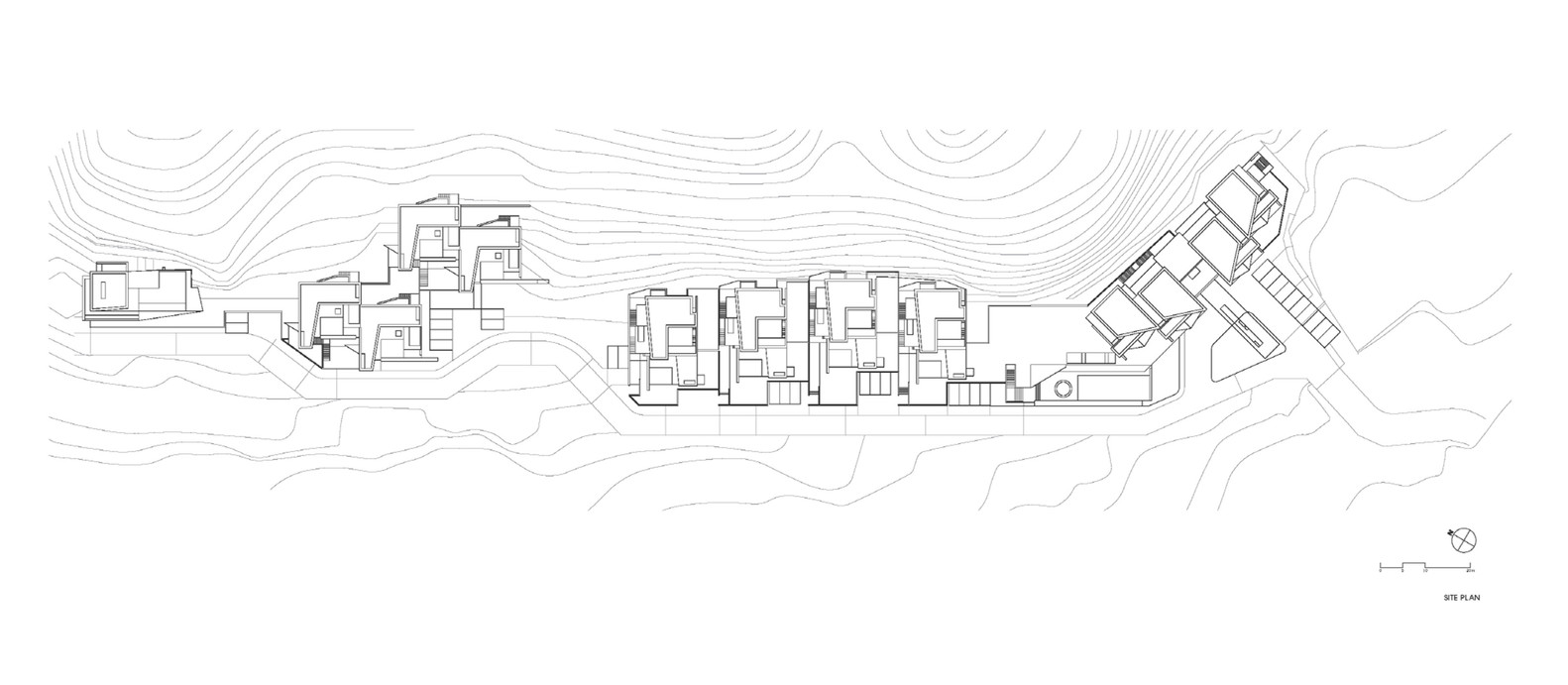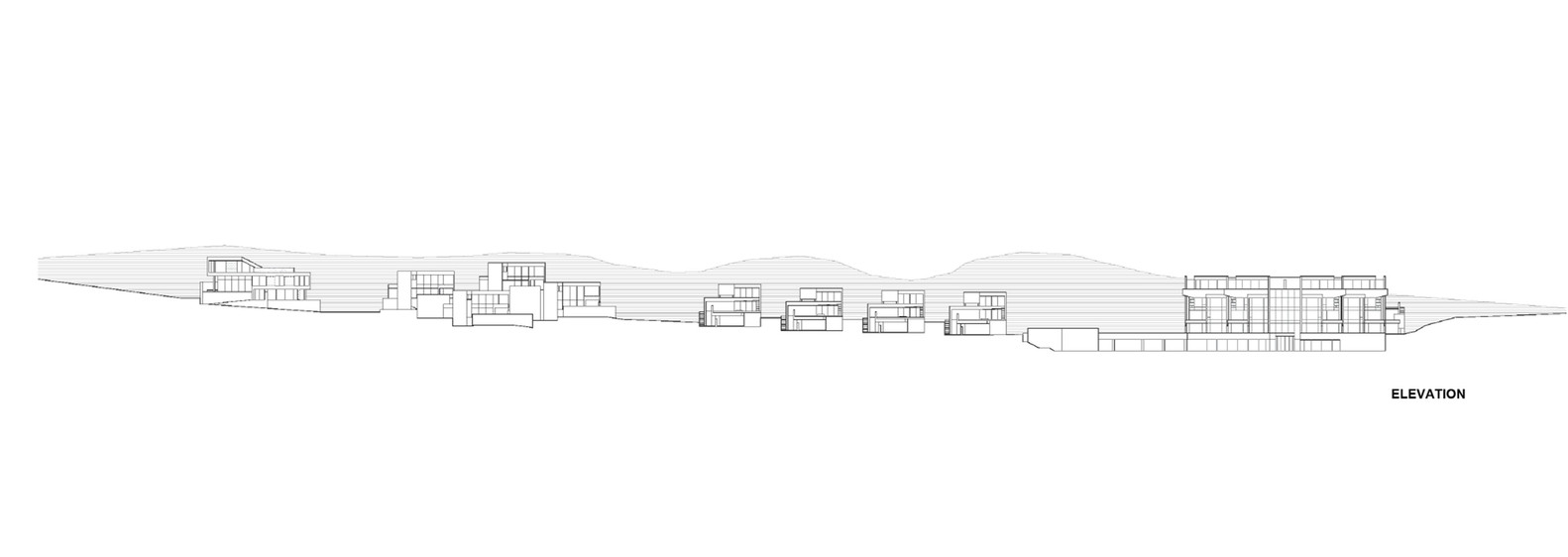Featuring a modern and complex-looking design, the Jeju Bayhill Pool & Villa is an outstanding building complex that was completed in 2013 in Jeju-do, South Korea. It was designed by Kim Dong-jin of L’EAU Design, and it sits on a 2.4-acre site. It is composed of four different building complexes, each featuring its own unique characteristics. Complex A operates as a hotel, even though it looks more like a resort due to its different terraces and differently colored rooms.
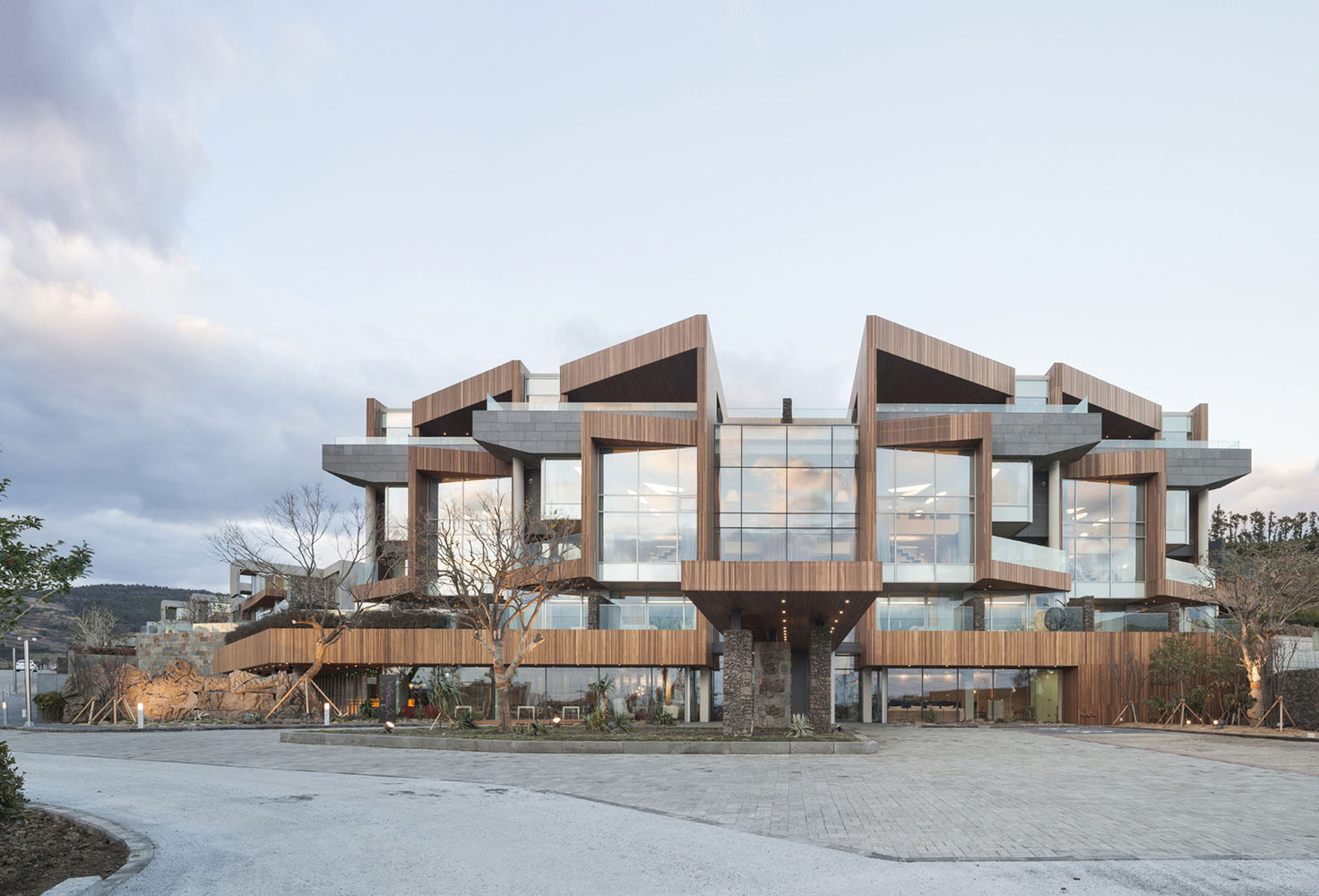
Complex B has a Stacking Villa layout, and it reflects the unique characteristics of the site’s sloping topography. Complex C is similar with B in regards to the slope, but it differentiates itself by using a nearby roof as a courtyard. As far as complex D is concerned, it is independent and features a Z-shaped interior circulation. The Zigzag Villa uses vertical and horizontal dislocation in order to ensure the independence of each room.
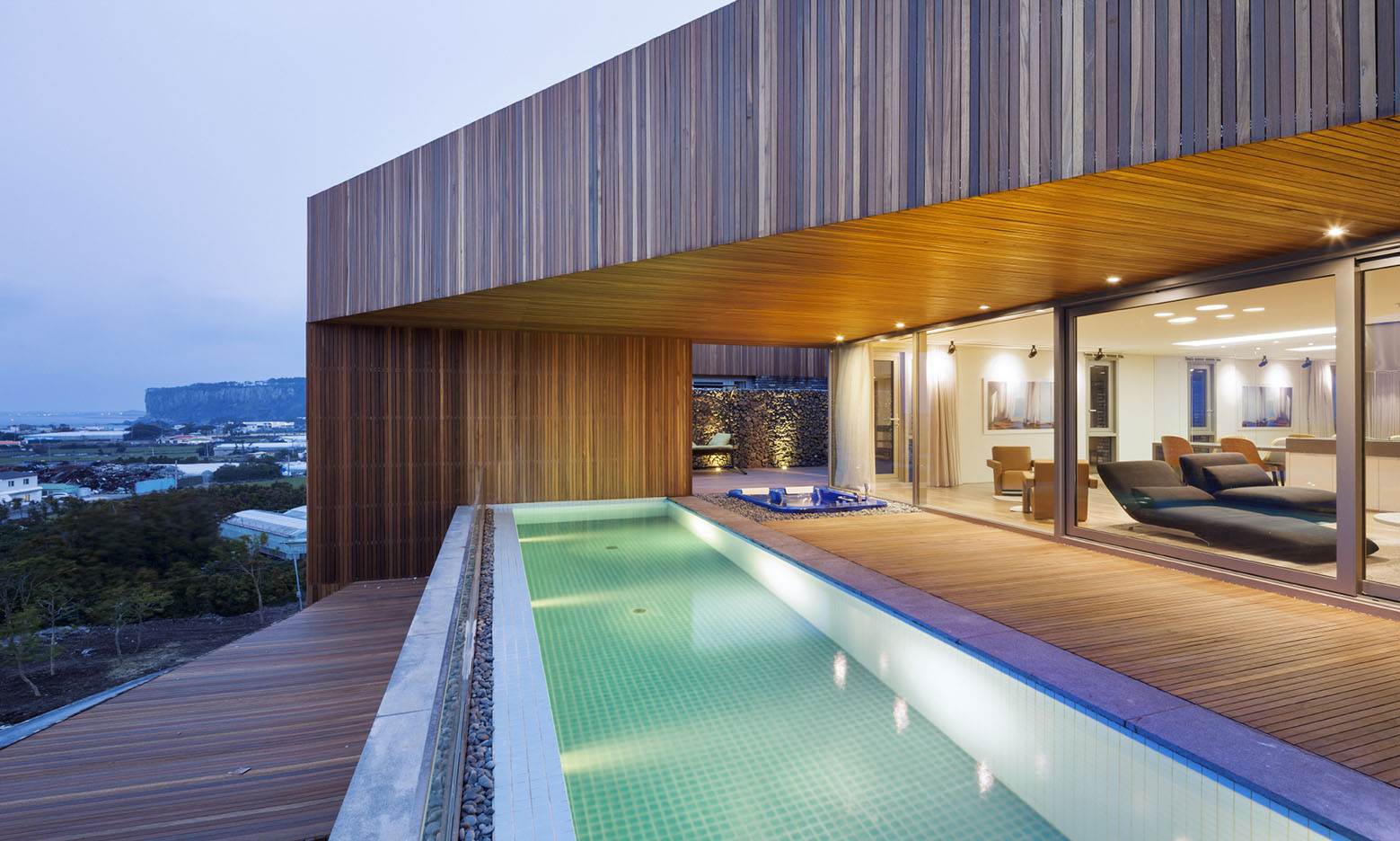
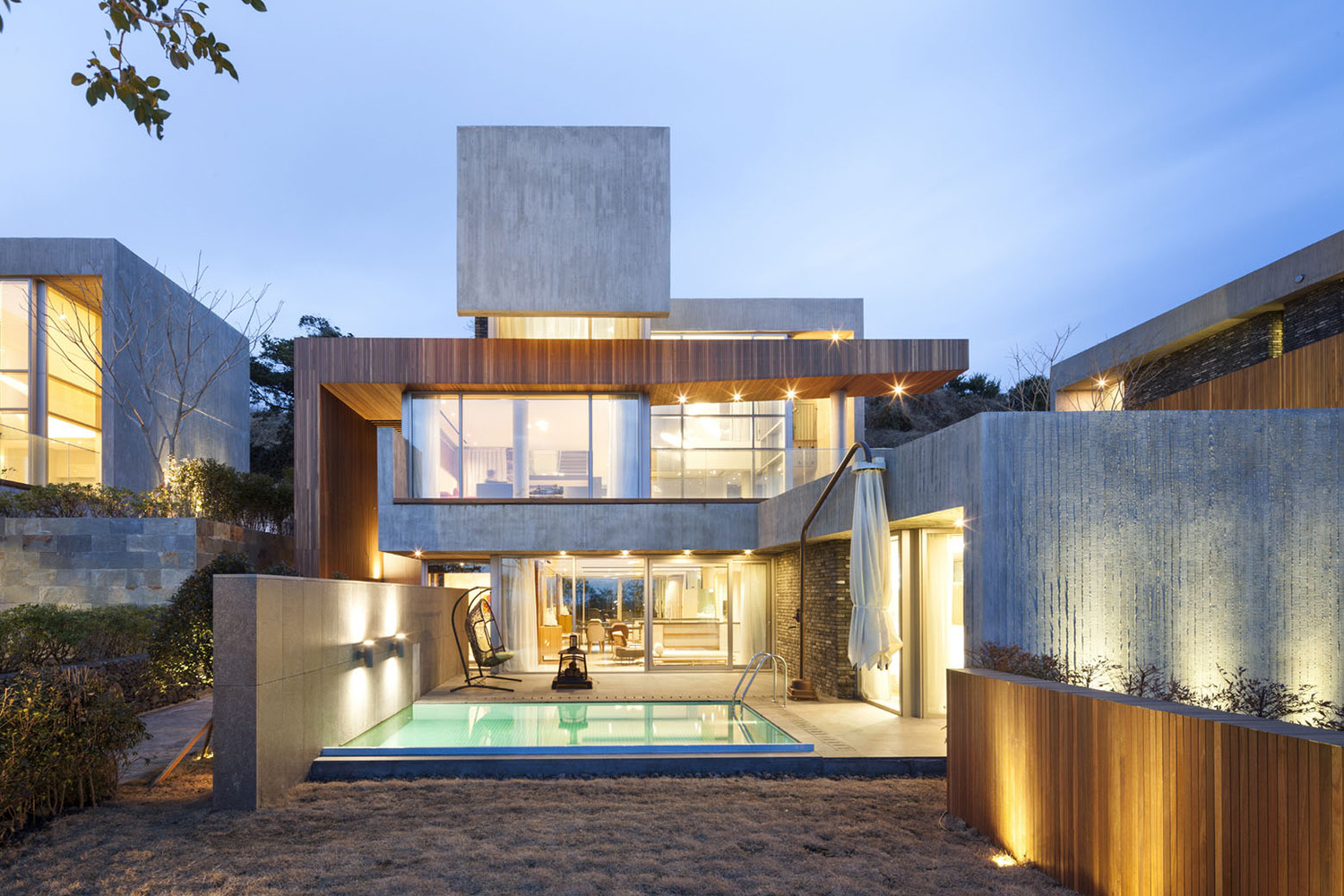
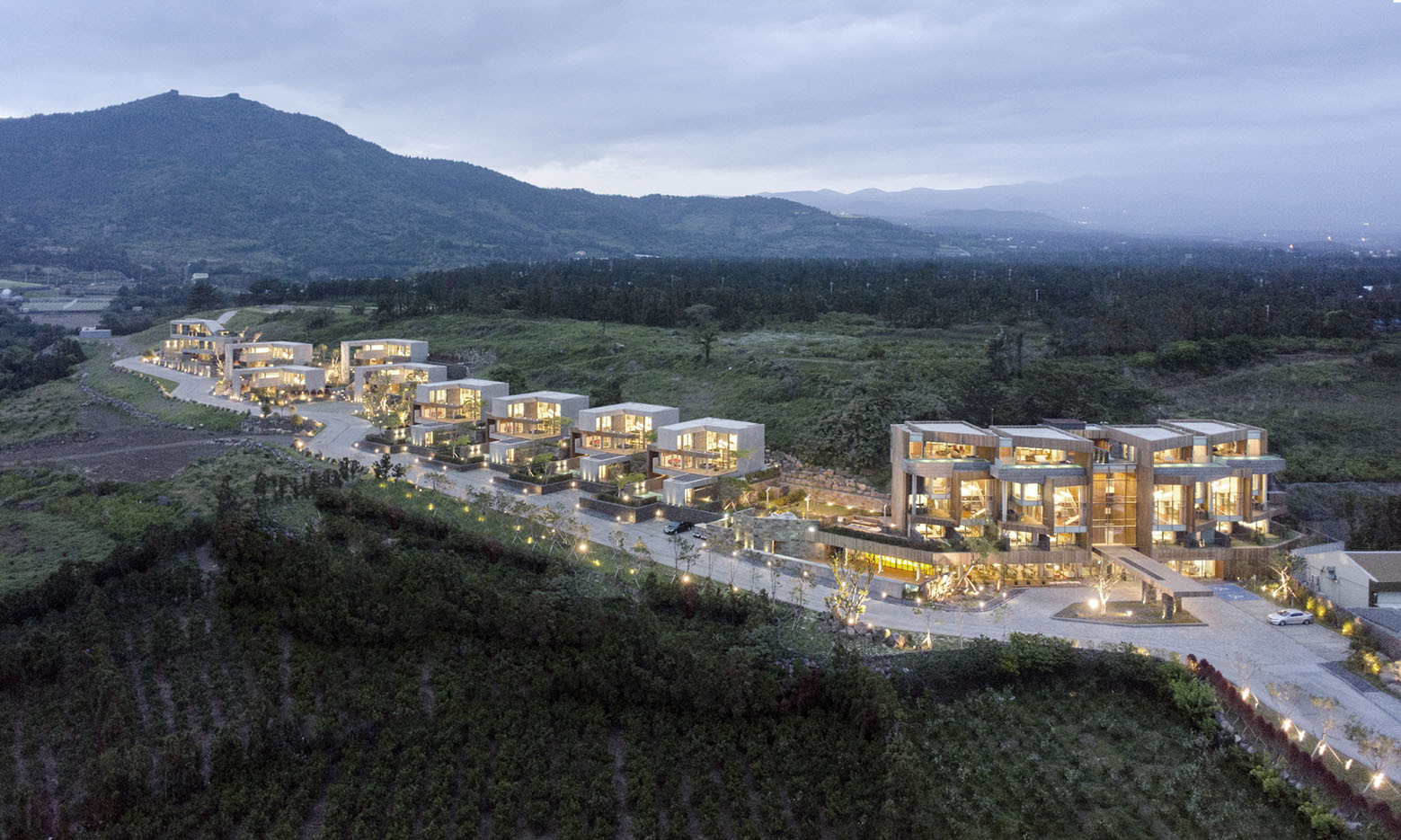
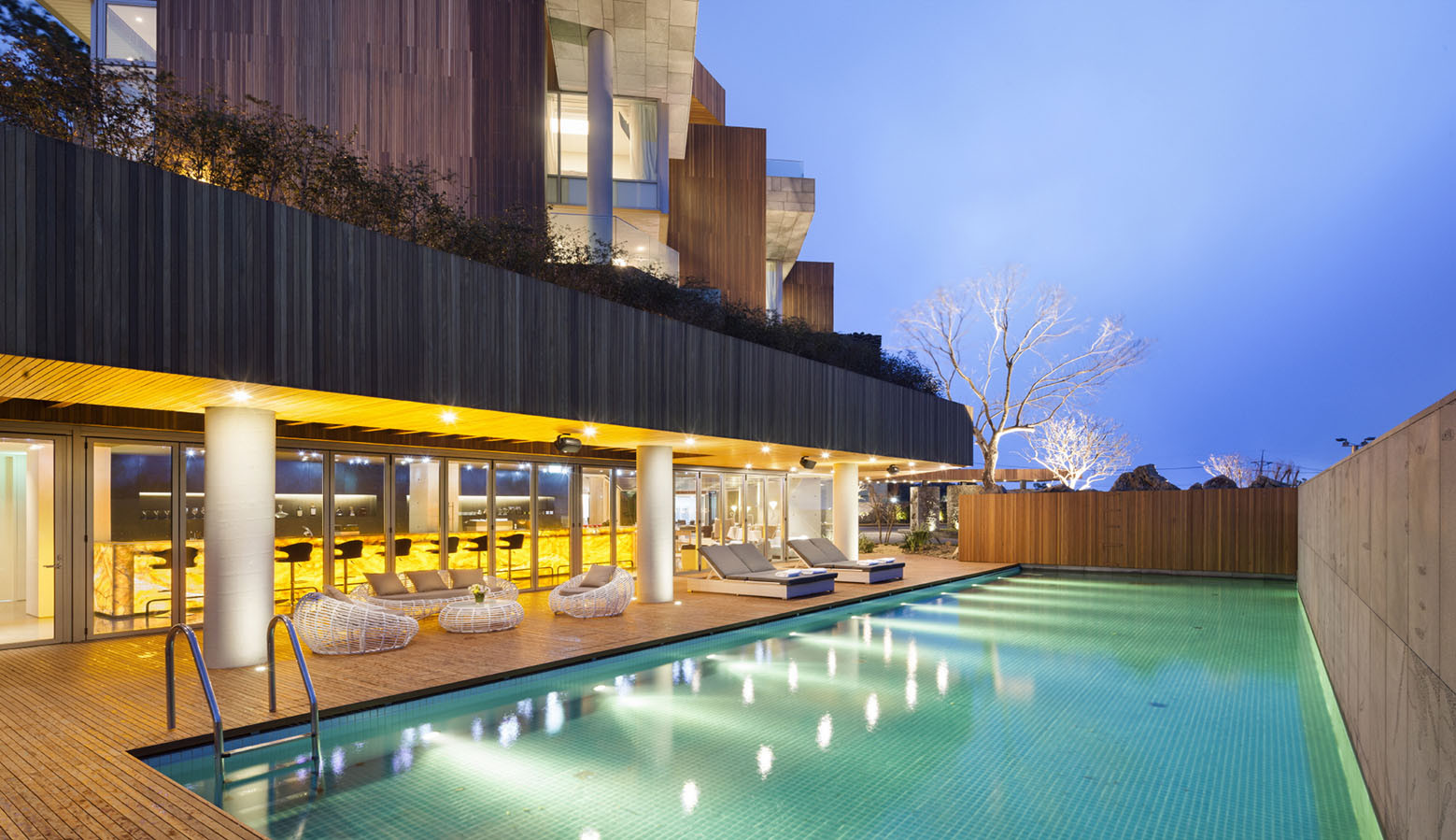
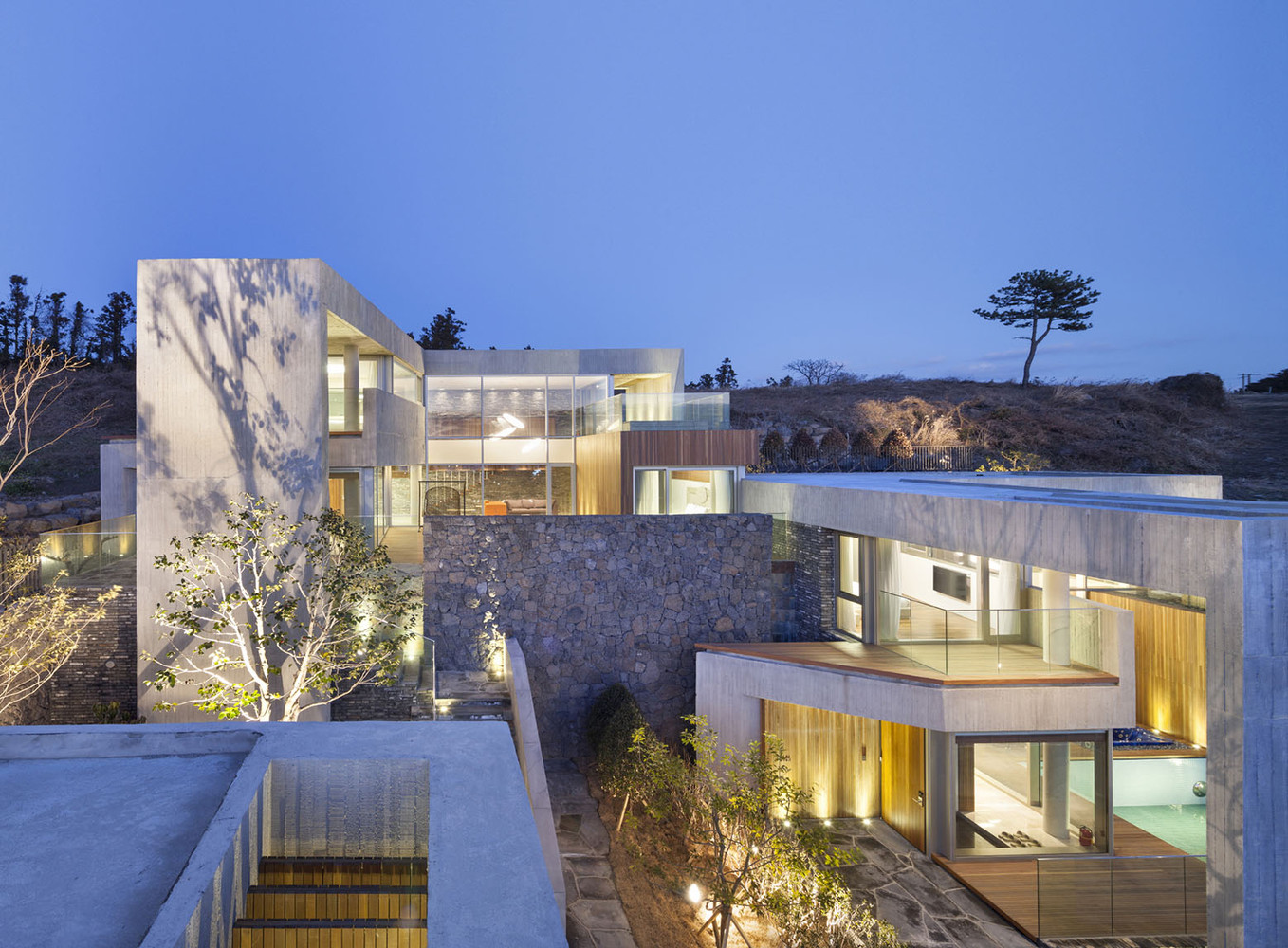
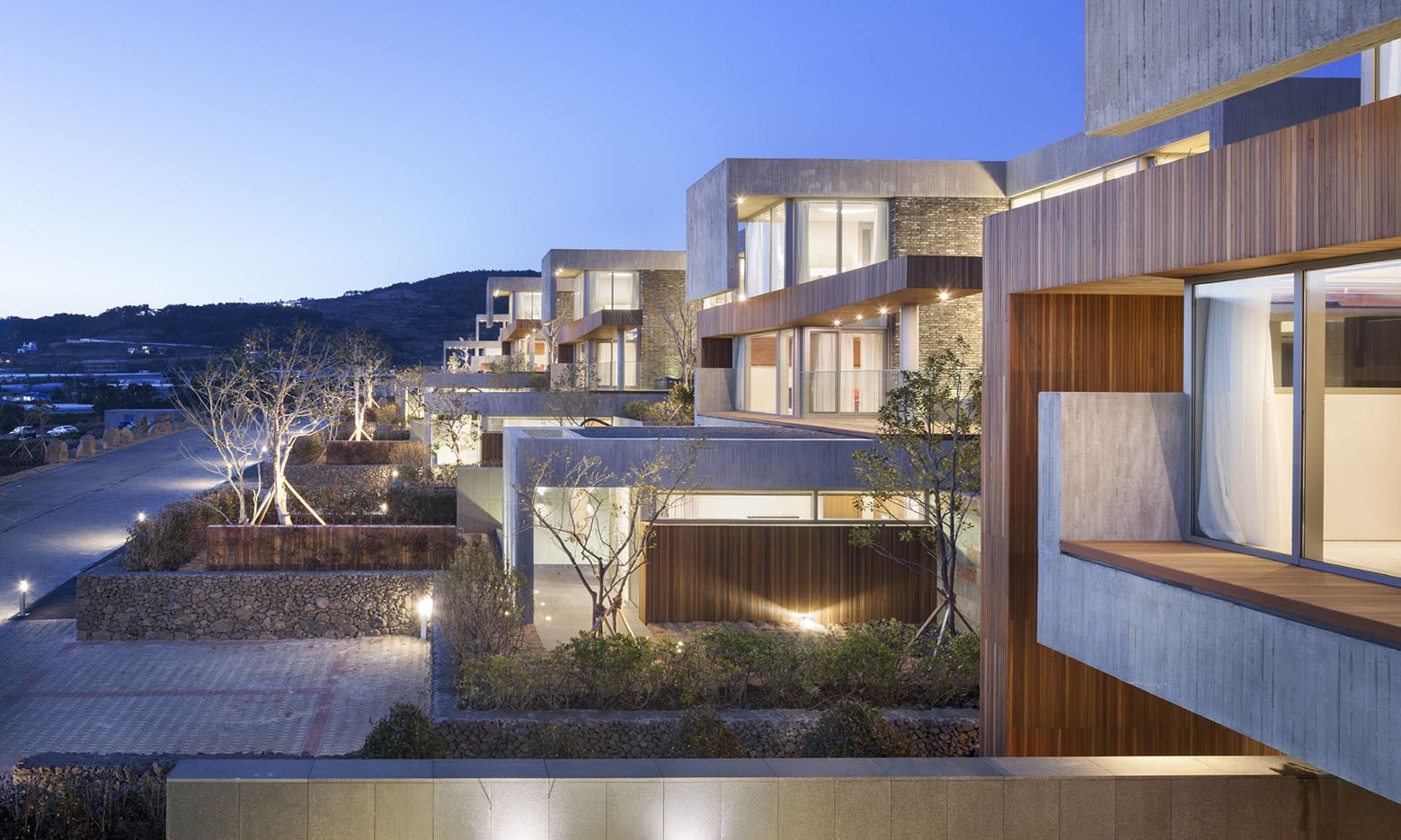
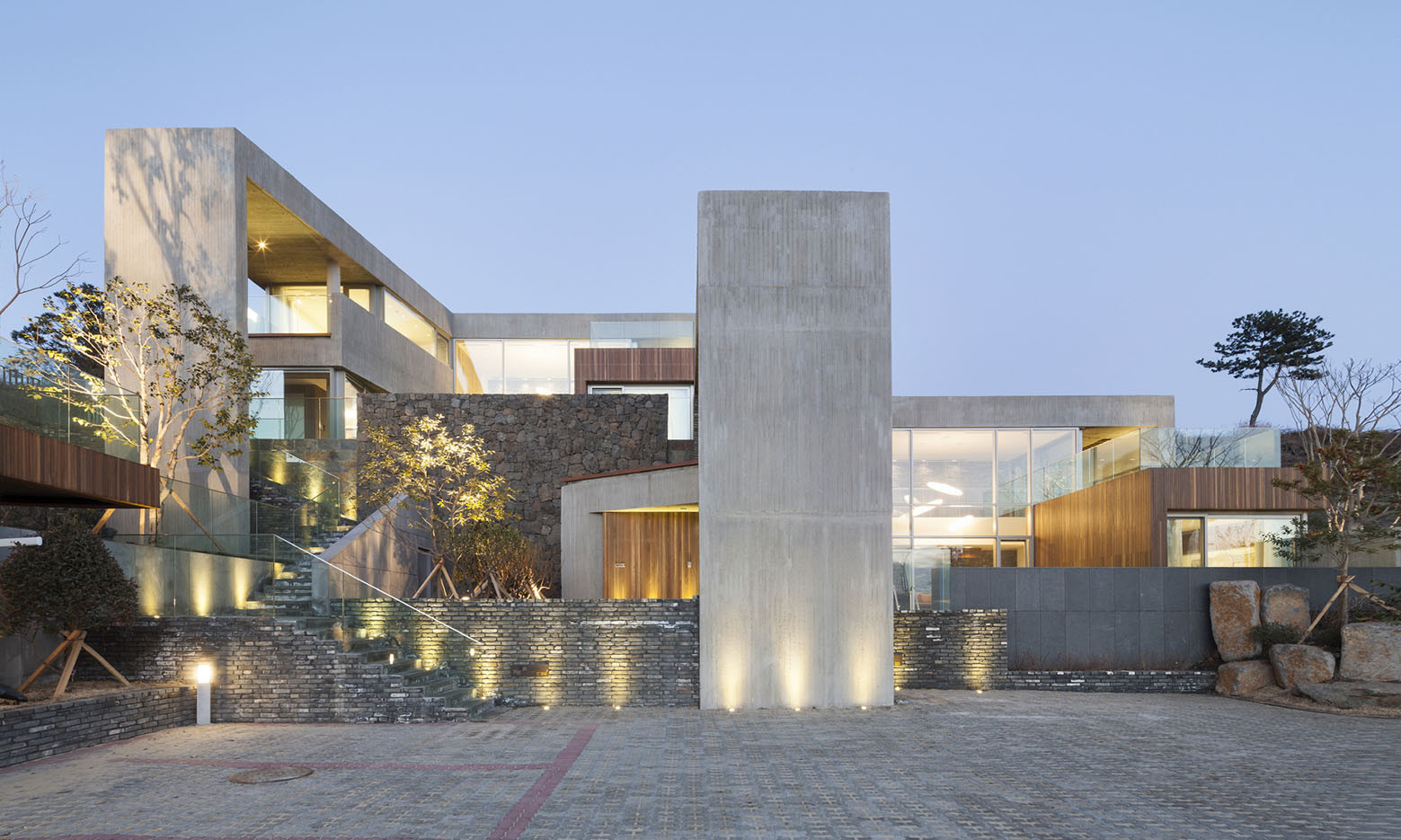
From the architect:
Cropping of Photoshop is careful and determining completion stage of touching up image as a final image, on the other hand, cropping of location can continuously create coincidence and undetermined image which cannot be generated without that exact time, location, and atmosphere.
As different photographer takes different photos from the same scenery, same location creates different sense of place per each situation and different unconscious recognition mode. At this moment, cropping process which eliminates unnecessary part for individual is a process of ‘self editing’ that takes out memories they want to forget and delaying the time they want to keep. After cropping out the unnecessary elements, one’s memory connotes their own story for the first time and turn into an image. New world which is created by volcanic activity. This place with different atmosphere from other location makes us feel dizzy by facing the fact how insignificant we are in front of the Mother Nature. People feel freedom when they walk along the shoreline called Olle Route with scattered basalt stone and the experience to upstream the speed of world by staying in nondaily new world like guest house or second house presents fresh inspiration to boring lives. Haye is very quiet and peaceful village, but this is one of the few remaining place where time stands still as it is not famous as tourist attraction yet.
The building calmly sitting on large yard provides various views of Haye. Beyond enjoying nature in one dimensional panoramic view from inside of the building, it is achieved by including landscape elements from beach, Baksugijeong, and village entry. If this is still common, the boundary based on descent solidity of the building become an origin of new experience that makes Jeju’s sky, ocean, mountain, filed more special. Concrete Frame – The landscape scenery that is proposed through artificial structure as a fixed screen with plasticity which provides various views through Scene Frame and Space Frame regenerates different scenery per each individual based on fixed physical frame as a gesture of capturing moments. Wood as a Hidden Frame, which uses more flexible natural material than concrete, makes the boundary vague and utilized as extension and editing tool of the scenery and create new concept of landscapes (Passage Editing).
Antique brick, stone mound, Jeju flagstone is a natural material that is refined by human hand and it becomes a process of human activity that naturally transfer for adjusting and communicating with rough nature, and also become a frame that creates a space for human living by creating standard and boundary as stratum of the world that connected to the ground. By using the effects of glass and mirror that reflects the scenery, unlimitedly reproduced scenery of ecstasy of nature through the Meditate Frame, people can experience the surrealistic space and create energy beyond deviating rest in Jeju.
Orientation-In terms of building orientation, before discussing about extraordinary scenery and nature, the most important element of Haye is the essence of location that ocean and village should be considered as main. By linearly orienting the main circulation along the ridge, it became part of the village more naturally and as a result of considering continuous future expansion in linear layout of phase type, the main building of resort is located on the entrance. By the strategy of having vague boundary with no wall or perimeter trees to blend in to village without sense of difference and make Haye to be read as a whole, it became new methodology to make a various culture based village where are not boring and made it function as community base that continuously develop.
Impressive symmetrical building of complex A, B and C with congregated layout which utilize topography and zigzag form of complex D are created by the fusion of role and functional element of each complexes. Different from Villa Complex B, C, and D, complex A is a Hotel Complex. Based on effective circulation of service area, we realized that views are different depending on the height and by differentiating the grounding system of each terrace which accepts views to layout the block (Block Housing), it allows each room and terrace have various colors. Through this method, it determined the impression of the resort.
Complex B as a Stacking Villa format, it uses stacking method that reflects the characteristics of sloped topography. It is a form that is possible to continuously layout in one direction like Go or checkmate move of Korean Chess. It also allows to have various forms and application of congregating. 2 units are combined to create 1 complex and one of the 2 units are allows to use 2 rooms and as a result, 1 complex can have maximum 3 households.
Complex C shares the same context as complex B which utilizes the slope, and the characteristics of complex C is having shared element that the roof of next door can be used as my courtyard (Clipping Villa). This can be inferred from the gathered layout of Jeju’s private houses, this project is reinterpreting the motif of Jeju’s private houses as symbiosis an harmony was the matrix of Jeju’s private houses which has low stone mound for house and courtyard boundary to share neighbor’s and my properties.
Different from complex A, B, and C, complex D is an independent building and based on loose spatial layout like gallery, z shaped circulation and forms is derived from having ramp format and locating many courtyards by utilizing the characteristics of road and topography. So-called Zigzag Villa utilizes horizontal and vertical dislocation to grant distinct characteristics on each in between spaces, secure each room’s independency, and induce accidental cross of gaze to allow experiencing abundant scenery frame. Written by Kim Dong-jin
Architects: Kim Dong-jin, L’EAU design
Location: Yeraehaean-ro, Jeju-do, South Korea
Design Team: Lee sang-hak, Lee young-sun, Park hae-in, Park Jong-beom , Jung Dong-hui, Ju Ik-hyeon, Yoon Ji-hye
Project Year: 2013
Photographs: Sun Namgoong
Construction: DAEAN, JEHYO, BMB
Structure Engineer: SDM Structural Engineering
Mechanical & Electrical Engineer: HANA Consulting Engineers Co.,LTD.
Construction supervision: L’EAU design Co., Ltd., GAU Co., Ltd
Site Area: 9,989㎡
Building Area: 1,978.70㎡
Gross Floor Area: 4,854.02㎡
Client: BAYHILL POOL&VILLA
